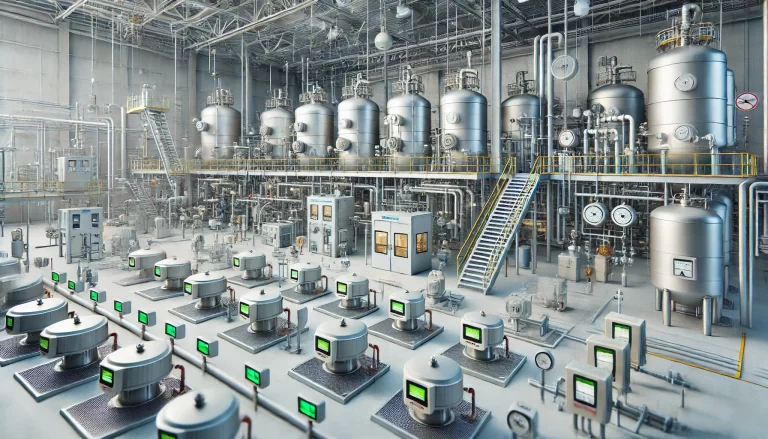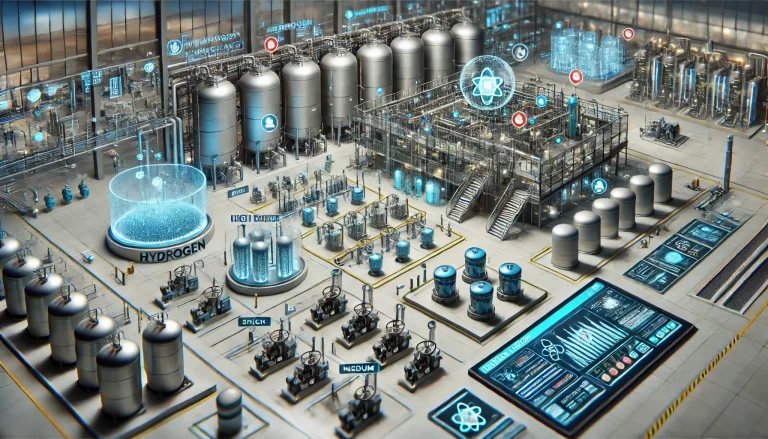Gas detection alarms are critical for safety in industrial environments where hazardous gases are present. Proper placement and configuration of these alarms are vital to ensure timely detection of leaks or dangerous concentrations, thereby preventing accidents, explosions, or exposure to toxic gases. The following is a comprehensive guide detailing the principles involved in setting up gas detection alarms effectively.
1. Covering All Potential Leak Points
The first and foremost consideration is ensuring that the gas detectors are installed at all potential leak points. These areas include key components like:
- Process pipelines: Especially at bends, joints, and connections where leaks are more likely.
- Valves and pumps: Mechanical equipment is prone to wear and tear, leading to leaks over time.
- Storage tanks: Both at the venting points and at the base, where gas may accumulate due to gravity.
The objective is to have a gas detector covering each potential leak source to detect gas at the earliest possible stage.

2. Installation Height Based on Gas Density
Different gases have different densities relative to air, and this affects how they disperse in the environment. The height at which gas detectors are installed is critical for effective detection:
- Lighter-than-air gases: Gases like hydrogen or methane are lighter than air and will rise when leaked. Therefore, detectors for these gases should be installed at high points in the facility, such as near the ceiling or above equipment.
- Heavier-than-air gases: Gases like chlorine, carbon dioxide, or propane are denser than air and will sink to lower levels. In such cases, detectors should be placed closer to the ground, typically near floor level or in pits where gas may accumulate.
This differentiation ensures that the detectors are placed in the path of gas flow, increasing the likelihood of timely detection.
3. Accounting for Airflow and Ventilation
Gas movement is influenced by airflow patterns in the area. Factors such as ventilation, wind direction, and air circulation must be considered:
- High air movement areas: In zones with strong ventilation or airflow, gas detectors should be installed where gas is likely to be carried by the wind or ventilated air. This may involve placing detectors near intake or exhaust fans, windows, or other airflow control points.
- Still air zones: In locations where there is limited airflow, such as enclosed spaces or corners, detectors should be placed where gas is likely to stagnate or pool.
By understanding the airflow, the installation can focus on areas where gas might accumulate, regardless of where the leak occurs.
4. Environmental Considerations
The physical environment in which gas detectors are installed can affect their functionality. Factors such as temperature, humidity, dust, and chemical interference must be taken into account:
- Extreme temperatures: Detectors installed in areas with high or low temperatures should be suited for these conditions to prevent false alarms or sensor degradation.
- High humidity or dust levels: In such environments, detectors need to be protected from condensation and clogging, often with protective covers or filters.
Additionally, placing detectors in sheltered locations can prevent direct exposure to rain or corrosive elements that could affect their accuracy.

5. Ensuring Sufficient Area Coverage
A single gas detector may not be sufficient to monitor a large area, especially in facilities with complex layouts or multiple equipment zones. Multiple detectors are often required to ensure full coverage. Factors to consider include:
- Distance between detectors: Detectors should be spaced to ensure no area is left unmonitored, with overlapping coverage in high-risk zones.
- Height and obstruction: If there are physical obstructions such as machinery or walls, additional detectors may be required to cover blind spots.
Optimal spacing and distribution of detectors ensure comprehensive monitoring of the entire area.
6. Setting Appropriate Alarm Thresholds
Alarm thresholds must be set based on the properties of the gas being detected, as well as relevant safety regulations:
- Occupational safety limits: Regulatory standards such as OSHA (Occupational Safety and Health Administration) and NIOSH (National Institute for Occupational Safety and Health) provide exposure limits for various gases. These limits should guide the setting of low- and high-level alarm thresholds.
- Flammability limits: For explosive gases, thresholds should be set at a fraction of the Lower Explosive Limit (LEL) to ensure early detection and action before concentrations reach dangerous levels.
Setting these thresholds appropriately ensures the alarms trigger before concentrations reach levels that could cause harm or ignite.

7. Routine Maintenance and Calibration
Regular maintenance and calibration of gas detectors are essential to ensure they remain accurate and reliable:
- Calibration: Detectors should be calibrated periodically, typically in line with manufacturer recommendations. Calibration involves testing the detectors with known concentrations of gas to ensure they trigger at the correct thresholds.
- Maintenance: Regular maintenance should include cleaning the detectors, inspecting wiring and connections, and testing alarms to verify that they function correctly.
A proactive maintenance schedule helps prevent false alarms and ensures that detectors are ready to respond to real emergencies.
8. Protection of Critical Areas
Gas detection alarms should be prioritized in critical areas where personnel safety is paramount:
- High-traffic areas: Detectors should be installed in zones where workers spend significant amounts of time, such as control rooms or maintenance areas.
- Emergency exits: To protect escape routes, detectors should monitor areas adjacent to emergency exits to ensure that personnel are not exposed to hazardous gases when evacuating.
- Critical infrastructure: Areas housing key infrastructure, such as power generators or control systems, should have gas detectors installed to prevent equipment damage in case of gas exposure.
Properly protecting these areas minimizes the risk to both personnel and equipment.

9. Alarm Levels and Response Protocols
It is recommended to establish multiple alarm levels to correspond to different gas concentrations. This allows for graded responses:
- Low-level alarm: At a lower concentration, a warning alarm may be triggered, prompting an investigation and potential evacuation of personnel in the affected area.
- High-level alarm: At higher concentrations, a more urgent alarm should trigger automatic safety measures, such as shutting off gas flow, activating ventilation systems, or even triggering fire suppression systems.
Having multiple alarm levels ensures that different levels of response can be implemented based on the severity of the situation.
Conclusion
The effective placement and configuration of gas detection alarms in hazardous areas involve a comprehensive assessment of potential leak sources, gas properties, environmental conditions, and regulatory requirements. By ensuring full coverage, setting appropriate alarm thresholds, and maintaining the detectors properly, industrial facilities can significantly reduce the risk of gas-related accidents and protect both personnel and equipment.
